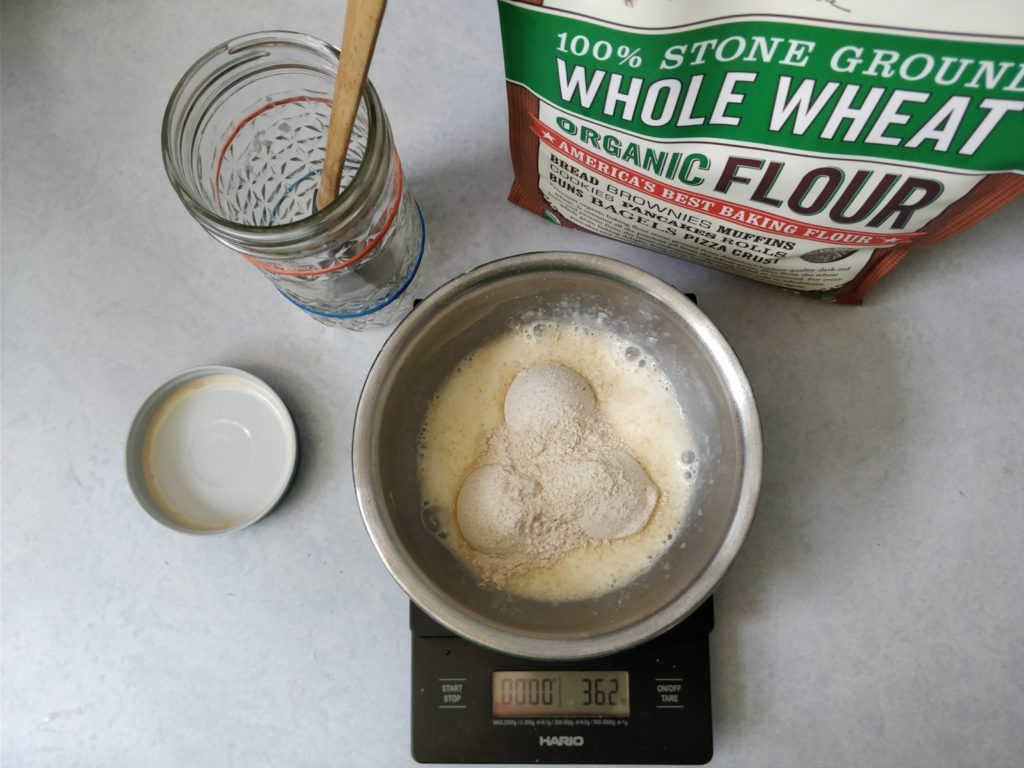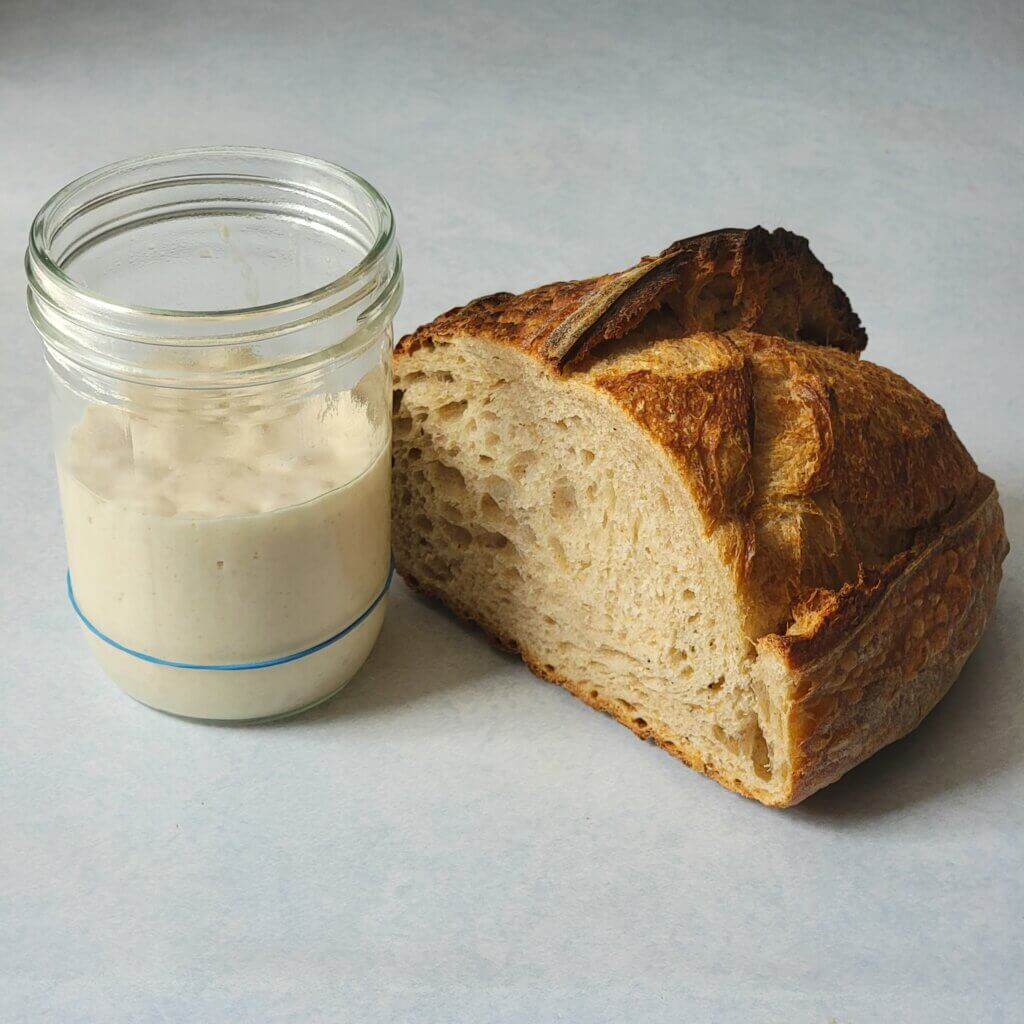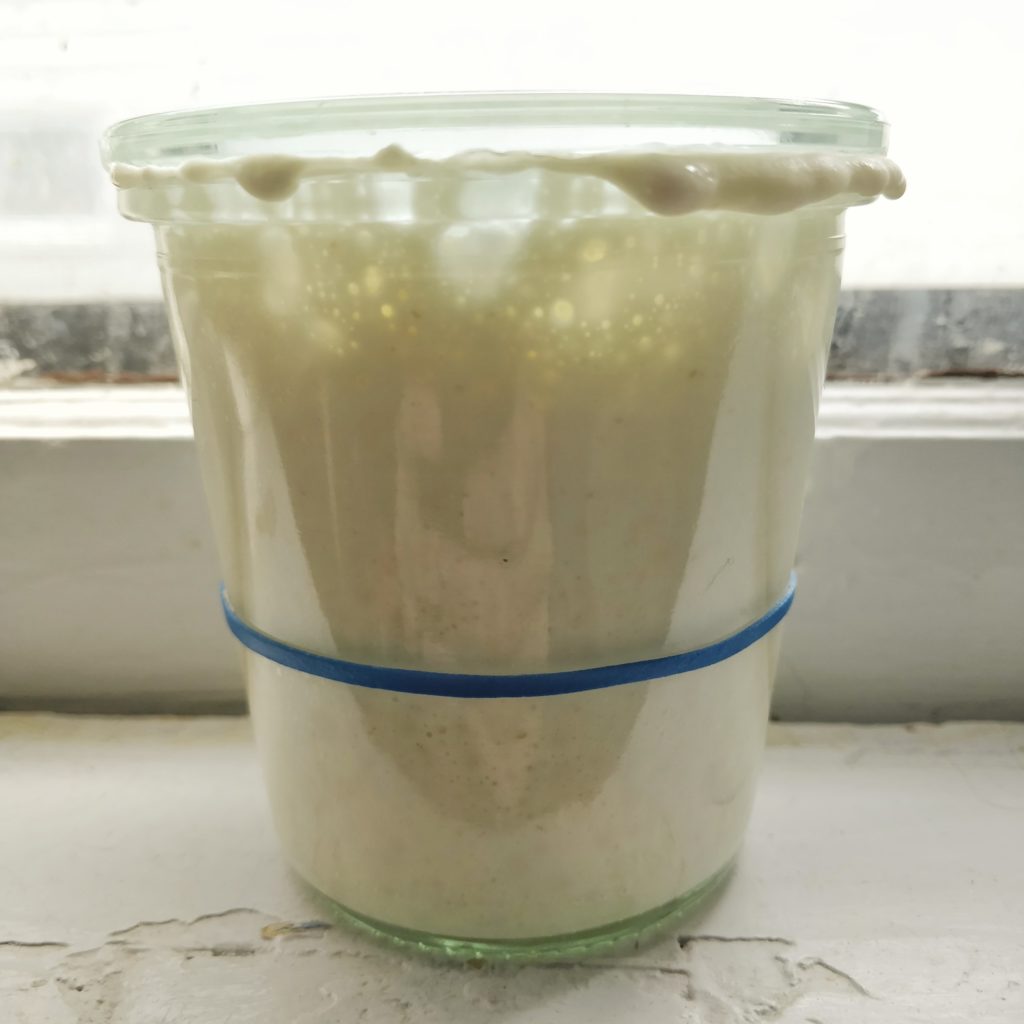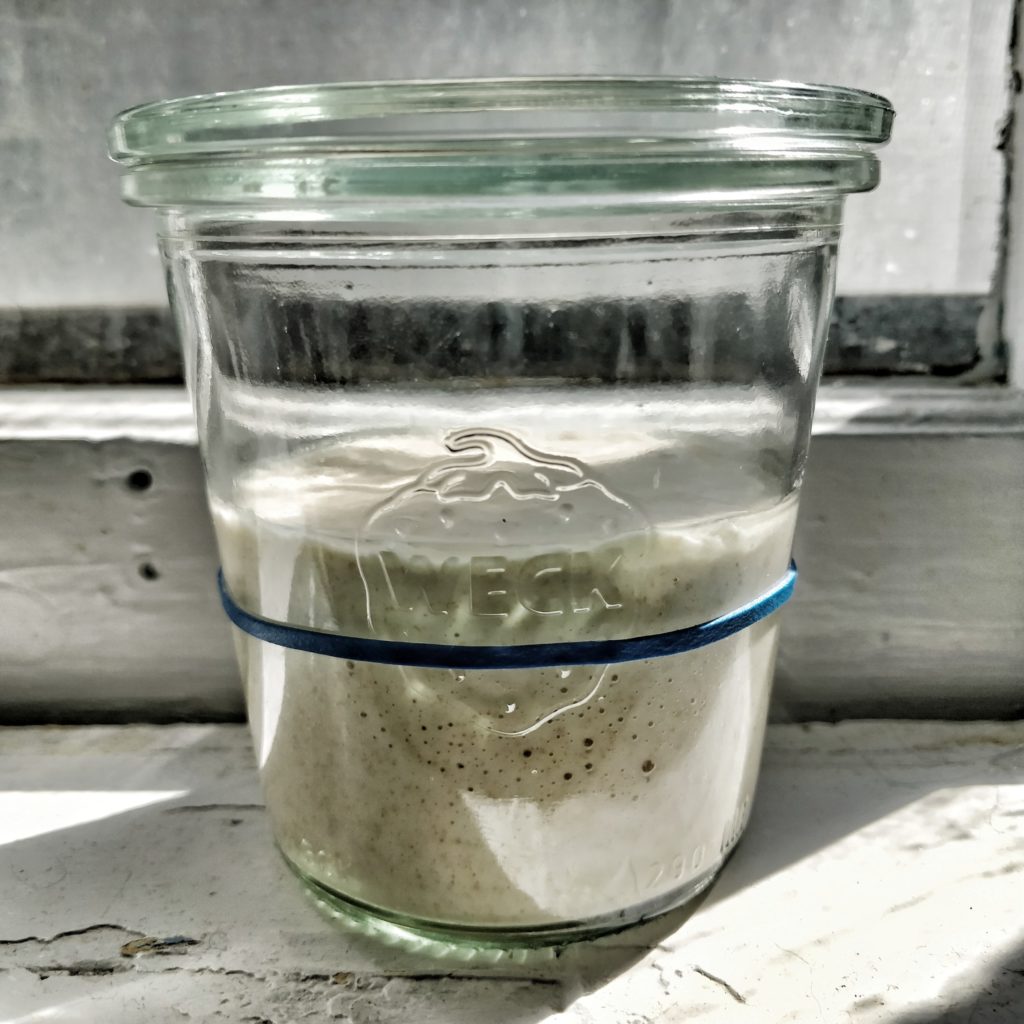Sourdough Science

I am transitioning my sourdough starter to whole wheat from the all-purpose flour I’ve been using. Partly because I finally found some whole wheat flour at the store this week, and partly because of this stunning time lapse video showing the rise and fall of three kinds of starter, made by the Wild Sourdough Project at the Rob Dunn Lab:
While the white and wheat perform similarly—same time to rise fully—the wheat has just a little extra staying power, while the white “crashes” a little faster at the end. You’ll of course notice that the wheat begins to fall before the white, but sustains some buoyancy while the white smoothly and quickly falls—watch the video at 0:45 to see what I mean.
These are fine details, of course, and they’re similar enough to not make much of a difference in my feeding schedule. However, the similar rise time and sustained activity have convinced me that the giant bag of whole wheat flour in my pantry can indeed be a little more useful to me than as just an additive to my bread doughs. All-purpose and bread flour (still hard to come by, by the way) are generally my main drivers for bread, pizza dough, pita, etc., but I usually add some whole what as a fraction of the the flour to add some flavor and texture. That means that I go through the whole wheat flour much slower than others. But I’m thinking that if I maintain my starter with whole wheat I can better even out the flour usage and keep things relatively fresh.
I also plan on using different flours for feeding the starter or building a levain/preferment depending on what is needed for that day’s schedule. If I ever pick up some rye flour, that would be excellent for the quickest rise, but for now I’ll probably use white flour for a quick initial burst of energy, and wheat flour for a slightly more forgiving timeframe.
If you’ve been thinking about starting a sourdough but haven’t worked up the motivation to do it, now is the time! The Wild Sourdough Project is looking for data in their research about sourdough, and you can contribute. Yes, you! Doing science! And making delicious bread! What are the downsides?
Head over to the Wild Sourdough Project webpage to find out what you’ll need and how to start your sourdough and what data they’re looking to collect. There’s even a bread recipe for beginners which doesn’t require a scale! You can even join a very supportive group on Facebook of both new and experienced sourdough enthusiasts to ask questions and share your experiences. Also, you can follow on Instagram @your_wildlife.




1 mention